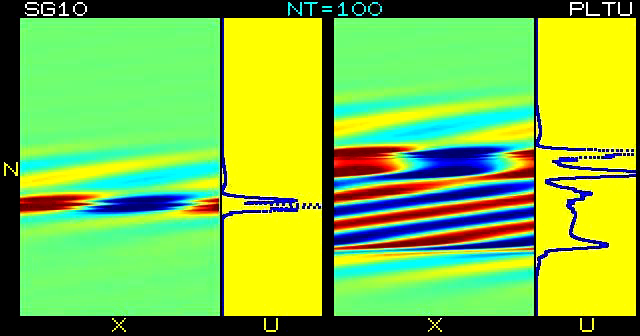As
internal waves
propagate upwards in the atmosphere they grow in
amplitude. This is a consequence of the law of conservation of momentum:
where the air is thinner (less mass) the vertical transport of horizontal
velocity must be greater. The question is how does the behaviour
predicted by linear theory change when the wave-amplitude is no longer
negligibly small?
The study here is limited to two-dimensional, Boussinesq, horizontally
periodic waves (which are already assumed to have large amplitude).
Separately we consider large amplitude effects upon
horizontally
and vertically localized wavepackets.

